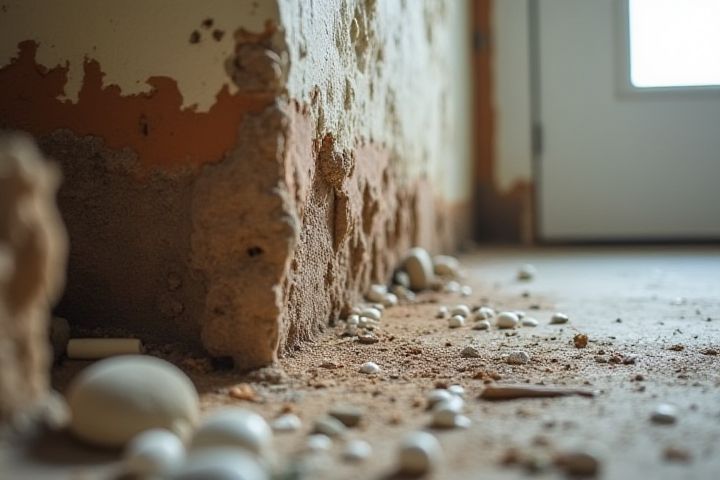
When prioritizing house repairs, focus first on essential structural issues, such as roof leaks or foundation cracks, which can lead to significant damage if left unaddressed. Next, tackle plumbing problems, including leaking pipes or malfunctioning fixtures, to prevent water damage and maintain a safe living environment. Electrical system upgrades or repairs should follow, ensuring proper wiring and outlet function for safety and efficiency. You should also consider addressing heating and cooling system malfunctions, as they directly impact comfort and energy bills. Finally, focus on cosmetic repairs, like painting or flooring updates, which improve aesthetics without compromising safety or function.
What House Repairs To Prioritize
Roof leaks
Addressing roof leaks should be your top priority, as they can lead to extensive water damage and structural issues within your home. Inspect the roof for missing shingles, damaged flashing, or cracks that may be allowing moisture to seep in. Consider hiring a professional roofing contractor to assess the damage and recommend appropriate repairs, such as patching leaks or replacing compromised sections. Regular maintenance, including gutter cleaning and roof inspections, can prevent leaks from occurring in the future and prolong the lifespan of your roofing system.
Foundation cracks
Foundation cracks should be prioritized for repair because they can lead to significant structural damage, potentially costing homeowners between $2,000 and $30,000 if not addressed promptly. Identifying the type of crack is crucial; vertical cracks may indicate settling, while horizontal cracks can suggest water pressure problems or drainage issues. If you notice gaps wider than 1/8 inch, it's essential to have a professional assess the situation, as this could signify serious foundation movement. Timely repairs can safeguard your home's value, prevent water intrusion, and maintain a healthy living environment.
Electrical issues
Electrical issues often represent a significant safety risk in your home. You should prioritize repairs such as fixing frayed wires, which can lead to short circuits or fires, and addressing any flickering lights that may indicate a faulty connection. Upgrading outdated circuit breakers or fuses can prevent overloads, while installing GFCI outlets in high-humidity areas reduces the risk of electrical shocks by up to 50%. Regularly inspecting your electrical system can prevent costly emergencies and ensure that your home remains safe and efficient.
Plumbing leaks
Addressing plumbing leaks should be your top priority, as they can lead to significant water damage and mold growth if left unattended. Begin by inspecting visible pipes for any signs of moisture, corrosion, or dripping water. It's essential to check your fixtures, such as faucets and toilets, to ensure they operate efficiently and don't contribute to water loss. Finally, be proactive in hiring a qualified plumber to assess hidden leaks behind walls or under floors, as these can cause extensive damage and increase your utility bills.
HVAC maintenance
Prioritize HVAC maintenance to enhance your home's air quality and energy efficiency. Regularly replace or clean air filters every one to three months to ensure optimal airflow and prevent system strain. Schedule professional inspections and tune-ups annually to identify potential issues before they escalate, ensuring your HVAC system operates smoothly. Addressing ductwork leaks promptly can also improve efficiency and reduce energy costs, making your home more comfortable year-round.
Pest infestations
Pest infestations can lead to significant structural and health issues, making it essential to tackle them promptly. Start by inspecting and sealing entry points, such as cracks and gaps in walls, doors, and windows, to prevent pests from entering; studies show that 80% of infestations begin through these openings. Implementing regular pest control treatments can help maintain a barrier against common pests like rodents and termites, which can cause damage costing up to $5 billion annually. Finally, addressing moisture problems, such as leaks or dampness, is crucial because pests like termites are attracted to environments with moisture levels exceeding 20%.
Water heater problems
Water heater problems should be prioritized due to their potential impact on your daily life and home integrity. If your water heater is leaking, it can cause significant water damage, with repair costs averaging between $500 and $2,000 depending on severity. Inconsistent water temperatures, often indicating a thermostat malfunction or sediment buildup, can lead to higher energy bills. Regular maintenance, such as flushing the tank annually, can enhance efficiency and prolong the unit's lifespan, which typically ranges from 10 to 15 years.
Mold and mildew
Mold and mildew can pose serious health risks and structural damage to your home, making it crucial to prioritize their removal. Inspect areas with high moisture levels, such as bathrooms, kitchens, and basements, as these are prime spots for mold growth; target any leaks or water damage promptly. For effective remediation, ensure proper ventilation by installing exhaust fans and dehumidifiers to maintain humidity levels below 60%. If you find mold covering more than 10 square feet, consider hiring a professional for safe and thorough removal.
Damaged gutters
Damaged gutters can lead to significant water damage to your home, making it crucial to prioritize their repair. According to home maintenance experts, maintaining gutters should be a top priority at least twice a year or after severe weather events. A 1-inch rainstorm can produce over 1,500 gallons of water, which needs proper drainage to prevent foundation and landscaping issues. Inspect for cracks, rust, or sagging, and ensure downspouts direct water at least 5 to 10 feet away from your home's foundation to protect it from costly repairs.
Window and door seals
Window and door seals are crucial for maintaining energy efficiency in your home, as about 25%-30% of your heating and cooling energy can escape through these areas. Inspecting and replacing worn or damaged seals can help reduce your energy bills by up to 15%. For optimal performance, use weatherstripping materials designed for durability and easy installation, ensuring a snug fit to prevent drafts. Focusing on these seals can not only enhance comfort but also protect against moisture intrusion and unwanted pests.
